Terry Odell's Blog, page 276
July 29, 2011
Friday Field Trip - My LA Vacation
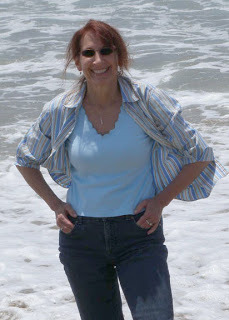 I was in Los Angeles visiting my parents a few weeks ago. I've got a few photos to share.
I was in Los Angeles visiting my parents a few weeks ago. I've got a few photos to share.First, we went down to the beach so I could dip my toes in the Pacific, a place where I spent many, many hours growing up. It's still cold.

Another trip was to the Getty Museum. Gorgeous grounds.





And, we had lunch at a mall in Santa Monica. So long for this week. I'll have more next Friday.

Published on July 29, 2011 04:00
July 28, 2011
Publishing a Book is an Adventure
Reminders: Scroll down to leave a comment on Maryn Sinclair's post (Tuesday's) to win one of her giveaways. Be sure to come back this weekend to see if you've won.
Don't miss the last of the Summer Smashwords Sale.
Today, I'm over at Patricia de Hemricourt's " Publishing a Book is an Adventure " blog. I hope you'll drop by.
Tomorrow, I've got a few vacation pictures from my recent trip to Los Angeles to share.
Don't miss the last of the Summer Smashwords Sale.
Today, I'm over at Patricia de Hemricourt's " Publishing a Book is an Adventure " blog. I hope you'll drop by.
Tomorrow, I've got a few vacation pictures from my recent trip to Los Angeles to share.
Published on July 28, 2011 04:00
July 27, 2011
Develop Those Characters
What I'm reading: Pray for Silence, by Linda Castillo; Crazy for Love, by Victoria Dahl
Thanks to Maryn for her post yesterday. I'm working on re-editing a backlist book so I can publish it when I get my rights back. It was the first book I had published—and actually, the first book I wrote, although it had been rewritten countless times before being picked up by the publisher. Anyway, I know exactly what she's talking about. And don't forget – you have until Friday to leave a comment to win a book. Since she's giving two books away, that doubles the odds that you'll win.
And don't forget the summer sale at Smashwords. What's in a Name? is 25% off, but only until the end of July.
 In my blog hopping the other day, I came across two posts talking about developing characters. One used worksheets and questionnaires, and suggested spending a LOT of time getting to know characters before putting words on the page, including suggestions to spend ten minutes writing and reflecting on the character. This, while it might work for some, is a total turnoff to me. If I'm going to write for ten minutes, I want to be working on the WIP.
In my blog hopping the other day, I came across two posts talking about developing characters. One used worksheets and questionnaires, and suggested spending a LOT of time getting to know characters before putting words on the page, including suggestions to spend ten minutes writing and reflecting on the character. This, while it might work for some, is a total turnoff to me. If I'm going to write for ten minutes, I want to be working on the WIP.
The other said you could do that, but it wouldn't create the depth of character you'd achieve by looking at how your characters behaved, and that you have to write beyond the character notes. If I may quote their guest blogger, Harry Bingham:
First of all, character emerges from every tiny detail. Those little snippets of dialogue. The humour. Weird little choices of vocabulary. You can't get those things from writing character notes, you just get to them by writing the character. Letting yourself sink into the moment.
Are either of these the right approach? Of course not. It's no different from any other helpful writing tips. Each author will find what works. And even for the same author, what works for one book might not work for another.
I have finally returned to my current WIP, now that the copy edits are all turned in. (And no, I haven't heard from either editor yet). I created my main characters with broad brushstrokes, and fill in the details as I go. I don't need to know that the favorite expression of my heroine is Sheesh until I actually write it and it works. I didn't know she'd been engaged until I needed more conflict for her when she meets the hero. I didn't know her parents had expected her to follow in their footsteps until I needed a stronger reason for her to be struggling to open her own bakery in a new community. I tend to 'find' these traits as I ask myself "WHY" during the writing process.
I've also (at last) got that dead body. I didn't even know which character was going to end up on the bakery floor, or exactly how he or she would die when I started writing. But once I picked my cause of death, I needed more history on the character. How did I do this? The same way my cops are doing it. I have them in the room, with their white board, making notes and asking questions. And as they ask and answer, I write.
For example, the victim died of a drug overdose. Once I establish that, then I can decide whether she was a drug user, either recreational or perhaps taking prescriptions for some ailment. If that's the case, then I'll figure out what the ailment was, but I didn't need to know that from the beginning. As it turns out, she regarded her body as a temple. (Seemed to be more of a mystery that way). And with that piece of information, I could mention that she took pride in using only organic ingredients in her shop.
If I were a plotter, perhaps I'd have known all this before I started. But to me, knowing too much means forcing clues rather than layering them in more subtly. And I'd have missed all the fun of looking at the story and deciding which of the characters I'd introduced was going to have to die.
Thanks to Maryn for her post yesterday. I'm working on re-editing a backlist book so I can publish it when I get my rights back. It was the first book I had published—and actually, the first book I wrote, although it had been rewritten countless times before being picked up by the publisher. Anyway, I know exactly what she's talking about. And don't forget – you have until Friday to leave a comment to win a book. Since she's giving two books away, that doubles the odds that you'll win.
And don't forget the summer sale at Smashwords. What's in a Name? is 25% off, but only until the end of July.
 In my blog hopping the other day, I came across two posts talking about developing characters. One used worksheets and questionnaires, and suggested spending a LOT of time getting to know characters before putting words on the page, including suggestions to spend ten minutes writing and reflecting on the character. This, while it might work for some, is a total turnoff to me. If I'm going to write for ten minutes, I want to be working on the WIP.
In my blog hopping the other day, I came across two posts talking about developing characters. One used worksheets and questionnaires, and suggested spending a LOT of time getting to know characters before putting words on the page, including suggestions to spend ten minutes writing and reflecting on the character. This, while it might work for some, is a total turnoff to me. If I'm going to write for ten minutes, I want to be working on the WIP. The other said you could do that, but it wouldn't create the depth of character you'd achieve by looking at how your characters behaved, and that you have to write beyond the character notes. If I may quote their guest blogger, Harry Bingham:
First of all, character emerges from every tiny detail. Those little snippets of dialogue. The humour. Weird little choices of vocabulary. You can't get those things from writing character notes, you just get to them by writing the character. Letting yourself sink into the moment.
Are either of these the right approach? Of course not. It's no different from any other helpful writing tips. Each author will find what works. And even for the same author, what works for one book might not work for another.
I have finally returned to my current WIP, now that the copy edits are all turned in. (And no, I haven't heard from either editor yet). I created my main characters with broad brushstrokes, and fill in the details as I go. I don't need to know that the favorite expression of my heroine is Sheesh until I actually write it and it works. I didn't know she'd been engaged until I needed more conflict for her when she meets the hero. I didn't know her parents had expected her to follow in their footsteps until I needed a stronger reason for her to be struggling to open her own bakery in a new community. I tend to 'find' these traits as I ask myself "WHY" during the writing process.
I've also (at last) got that dead body. I didn't even know which character was going to end up on the bakery floor, or exactly how he or she would die when I started writing. But once I picked my cause of death, I needed more history on the character. How did I do this? The same way my cops are doing it. I have them in the room, with their white board, making notes and asking questions. And as they ask and answer, I write.
For example, the victim died of a drug overdose. Once I establish that, then I can decide whether she was a drug user, either recreational or perhaps taking prescriptions for some ailment. If that's the case, then I'll figure out what the ailment was, but I didn't need to know that from the beginning. As it turns out, she regarded her body as a temple. (Seemed to be more of a mystery that way). And with that piece of information, I could mention that she took pride in using only organic ingredients in her shop.
If I were a plotter, perhaps I'd have known all this before I started. But to me, knowing too much means forcing clues rather than layering them in more subtly. And I'd have missed all the fun of looking at the story and deciding which of the characters I'd introduced was going to have to die.
Published on July 27, 2011 04:00
July 26, 2011
When Are You Finished Editing?
Today, my guest is Maryn Sinclair. Maryn is a New England native living in the South who loves creating characters who murder, love, hate, and connive, but mostly love. Her novels are erotic, but she hopes readers find that they're more than about sex, with contemporary characters who are confident, insecure, damaged, recovering, loyal, duplicitous, intriguing, heartbreaking, and every other conflicting adjective known to Roget, hooking readers from the beginning and turning pages until the end.
Leave a comment for a chance to win one of Maryn's books. She'll be choosing two lucky readers. Please check the end of this post for details.
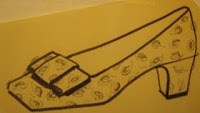 When do you say your book is finished and enough is enough? At the South Carolina Book Festival on May 14, bestselling author Robert Dugoni mentioned that if he had his way, he'd be red-penciling his manuscript as it rolled through the presses. Boy, could I relate. Not that my books are rolling off the presses, because they're e-books and I'm certainly not in the same class as a bestselling author, but because if someone didn't set a due date, I'd forever keep editing until I probably sucked the life out of what I liked about my book in the first place. So when do you decide your book is ready to go to print, or e-print?
When do you say your book is finished and enough is enough? At the South Carolina Book Festival on May 14, bestselling author Robert Dugoni mentioned that if he had his way, he'd be red-penciling his manuscript as it rolled through the presses. Boy, could I relate. Not that my books are rolling off the presses, because they're e-books and I'm certainly not in the same class as a bestselling author, but because if someone didn't set a due date, I'd forever keep editing until I probably sucked the life out of what I liked about my book in the first place. So when do you decide your book is ready to go to print, or e-print?
The question made me think of my very first freelance job as the owner of my own illustration/copywriting business. I'd freelanced for Fairchild Publications, a national chain of fashion newspapers, including Women's Wear Daily, doing all the illustrations that originated from manufacturers and designers in the New England area. Rarely, the New York paper would publish one of my drawings, but usually they were redrawn and bundled to coordinate with fashion reports from other regional offices around the country. One day, I received a call from an exclusive shop on Boston's trendiest street, asking me to draw a shoe for their Sunday ad. I decided that this was going to be the best drawing of a shoe ever to hit any newspaper anywhere on the planet. I accepted the job, settled at my drawing board, and began.
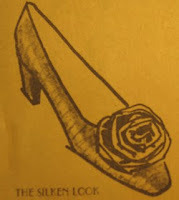
"No, that line isn't quite right," I said. "It doesn't have the flow." I started another drawing. And another. By four in the morning, discarded, scrunched up papers littered the floor around my drawing board. Not one drawing showed the grace I had in my mind's eye that illustrated what had now become THE DAMN SHOE. I hated every one of them. I was cockeyed, juiced on coffee, miserable that I couldn't pull off the da Vinci of shoe illustrations. What to do?
It was then I learned a valuable lesson. I drew THE DAMN SHOE. No, it wasn't a masterpiece, but it was the best I could do right then and meet the deadline that morning. I showered, dressed, and, bleary-eyed, brought the drawing and the shoe to the store. They didn't see the mess I saw, but what they did see they loved. It began a long association with that store and many more, where I drew everything and anything they advertised.
Given another day or week or month, I may have been able to draw the perfect shoe, but I couldn't that night. Given another day or week or month, I might have written a better book, or maybe I would have ruined it. Which one I'll never know, because I had a deadline, and what I'd written was the best I could do at that moment.
Epilogue: I never read my books once they're in print because I don't want to see what I could have written better. I've heard some actors never watch their movies for the same reason. But I've taken everything I've learned from writing one book and applied it to the next, just like I did with THE DAMN SHOE. Did I ever draw the perfect shoe or write the perfect sentence? I don't know. I still obsess—to a point. Then I conclude—this is the best I can do at this moment in time. Not next week or next month, but now. Once I came to that conclusion, I was a lot happier. By the way, the designer shoe illustrations are decades old. First clue: yellowed paper. Second clue: they cost $25.
Contest details. Winner will be announced this weekend, and you must check back to see if you won. Maryn wants to remind everyone that these are erotic romances. There's graphic language and, you know, erotic stuff. You can read the first chapter at her website to see if it's for you.
Maryn Sinclair's books are available at http://www.loose-id.com/Our-Authors/Maryn-Sinclair
You can read the first chapter of each by clicking on the book and then Read an excerpt.
Sexual Persuasion is now available on Kindle. Also, check out her website at: http://www.MarynSinclair.com
Leave a comment for a chance to win one of Maryn's books. She'll be choosing two lucky readers. Please check the end of this post for details.
 When do you say your book is finished and enough is enough? At the South Carolina Book Festival on May 14, bestselling author Robert Dugoni mentioned that if he had his way, he'd be red-penciling his manuscript as it rolled through the presses. Boy, could I relate. Not that my books are rolling off the presses, because they're e-books and I'm certainly not in the same class as a bestselling author, but because if someone didn't set a due date, I'd forever keep editing until I probably sucked the life out of what I liked about my book in the first place. So when do you decide your book is ready to go to print, or e-print?
When do you say your book is finished and enough is enough? At the South Carolina Book Festival on May 14, bestselling author Robert Dugoni mentioned that if he had his way, he'd be red-penciling his manuscript as it rolled through the presses. Boy, could I relate. Not that my books are rolling off the presses, because they're e-books and I'm certainly not in the same class as a bestselling author, but because if someone didn't set a due date, I'd forever keep editing until I probably sucked the life out of what I liked about my book in the first place. So when do you decide your book is ready to go to print, or e-print? The question made me think of my very first freelance job as the owner of my own illustration/copywriting business. I'd freelanced for Fairchild Publications, a national chain of fashion newspapers, including Women's Wear Daily, doing all the illustrations that originated from manufacturers and designers in the New England area. Rarely, the New York paper would publish one of my drawings, but usually they were redrawn and bundled to coordinate with fashion reports from other regional offices around the country. One day, I received a call from an exclusive shop on Boston's trendiest street, asking me to draw a shoe for their Sunday ad. I decided that this was going to be the best drawing of a shoe ever to hit any newspaper anywhere on the planet. I accepted the job, settled at my drawing board, and began.

"No, that line isn't quite right," I said. "It doesn't have the flow." I started another drawing. And another. By four in the morning, discarded, scrunched up papers littered the floor around my drawing board. Not one drawing showed the grace I had in my mind's eye that illustrated what had now become THE DAMN SHOE. I hated every one of them. I was cockeyed, juiced on coffee, miserable that I couldn't pull off the da Vinci of shoe illustrations. What to do?
It was then I learned a valuable lesson. I drew THE DAMN SHOE. No, it wasn't a masterpiece, but it was the best I could do right then and meet the deadline that morning. I showered, dressed, and, bleary-eyed, brought the drawing and the shoe to the store. They didn't see the mess I saw, but what they did see they loved. It began a long association with that store and many more, where I drew everything and anything they advertised.
Given another day or week or month, I may have been able to draw the perfect shoe, but I couldn't that night. Given another day or week or month, I might have written a better book, or maybe I would have ruined it. Which one I'll never know, because I had a deadline, and what I'd written was the best I could do at that moment.
Epilogue: I never read my books once they're in print because I don't want to see what I could have written better. I've heard some actors never watch their movies for the same reason. But I've taken everything I've learned from writing one book and applied it to the next, just like I did with THE DAMN SHOE. Did I ever draw the perfect shoe or write the perfect sentence? I don't know. I still obsess—to a point. Then I conclude—this is the best I can do at this moment in time. Not next week or next month, but now. Once I came to that conclusion, I was a lot happier. By the way, the designer shoe illustrations are decades old. First clue: yellowed paper. Second clue: they cost $25.
Contest details. Winner will be announced this weekend, and you must check back to see if you won. Maryn wants to remind everyone that these are erotic romances. There's graphic language and, you know, erotic stuff. You can read the first chapter at her website to see if it's for you.
Maryn Sinclair's books are available at http://www.loose-id.com/Our-Authors/Maryn-Sinclair
You can read the first chapter of each by clicking on the book and then Read an excerpt.
Sexual Persuasion is now available on Kindle. Also, check out her website at: http://www.MarynSinclair.com
Published on July 26, 2011 05:00
July 25, 2011
Book Clubs - What Goes On?
What I'm reading: One Small Victory, by Maryann Miller
Last week, I talked about reading outside my normal genre range for a book club.
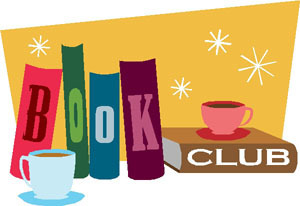
They meet at their library (which is not in my county system, but isn't that far away, given typical distances up here in the mountains). After a bit of mingling, they have a nice breakfast, and then they have their business meeting.
The leader assured me that this meeting was atypical in that they had a lot of community business to discuss. The club is part of their "Friends of the Library" and they do more than discuss books. Things on the agenda included organizing a library clean-up day, and a book sale at a local community "fair", a cemetery tour as a fundraiser, as well as concern for a new school scheduled to break ground next month and open in a year.
Once their business was finished, the group divided to discuss the two books assigned for the month. Because the group is large (about 35 members), they're split into two groups, so although they're a united front for the business meeting and social time, each group reads only one of the books, which allows more time for each member to add to the book discussion.
Since I was a visitor, I had my choice of groups, and I opted to sit in on the group that had read the book I didn't much care for. I was curious to see how my opinions matched those of others in the group, and how reading like a "writer" differed from reading like a "reader."
Their setup is that they go around the room, with everyone saying what they liked or didn't like about the book, and giving it a score from 1 to 10. The first woman to speak had listened to the book on audio, and she said the reader did an excellent job of keeping her in the story. Also, his English accent helped ground her in the book's setting.
As we went around the room, opinions seemed divided into "really liked it" and "didn't like it at all" camps. One woman had read it when it first came out, and didn't like it then. She said she normally tries to at least do a quick re-read when this happens with a book club book, but she had no desire to revisit it. Only one member said she felt the book fell into the middle of the spectrum. What were some of the reasons people gave to back their scores?
Descriptions: Some loved the flowery descriptions, others said it interfered with the read.
Characters: Almost everyone agreed about the main character's personality traits, but some thought they made him a fascinating character and others said they wanted to see him show a little backbone. The term marshmallow came up several times.
Pacing: Some liked the meandering pace, others felt it dragged to the point where they didn't want to finish the book.
Plot: Some saw clever twists, others said it was totally predictable.
The book was blurbed as "humorous" yet it was British humor, which some appreciated and others didn't get at all.
As for how the members approached the meeting. Some took copious notes and read quotes of passages they liked. Some admitted they didn't read the book at all.
And I think that in the end, that's about the way it is for any book you read. You'll like some, you'll dislike some, and some, you won't care about one way or the other. Is it a good thing to read books because someone makes it "required" reading? I don't know. I do know I read two books I would otherwise never have considered, and trying something new is a good thing. For next month, one of the selections is a mystery set in the Leadville Colorado area, written by a local author. That one sounds closer to what I'd like to read. The second book is written from a dog's POV. I think I'll give that one a pass.
My ideal book club? I'd have a relatively small group—maybe 10 or so—and each member would read any book they liked, and then tell the rest of the group about it. If someone liked what they heard, they could then read the book for themselves. Of course, I suppose that brings up the problem of spoilers—but since word of mouth is still the best advertising, the members would have to have some sort of guidelines about what to reveal or not reveal.
Tomorrow, my guest is aurhor Maryn Sinclair, who's going to be talking about knowing when your book is finished. She's giving away books, so be sure to come back!
Last week, I talked about reading outside my normal genre range for a book club.

They meet at their library (which is not in my county system, but isn't that far away, given typical distances up here in the mountains). After a bit of mingling, they have a nice breakfast, and then they have their business meeting.
The leader assured me that this meeting was atypical in that they had a lot of community business to discuss. The club is part of their "Friends of the Library" and they do more than discuss books. Things on the agenda included organizing a library clean-up day, and a book sale at a local community "fair", a cemetery tour as a fundraiser, as well as concern for a new school scheduled to break ground next month and open in a year.
Once their business was finished, the group divided to discuss the two books assigned for the month. Because the group is large (about 35 members), they're split into two groups, so although they're a united front for the business meeting and social time, each group reads only one of the books, which allows more time for each member to add to the book discussion.
Since I was a visitor, I had my choice of groups, and I opted to sit in on the group that had read the book I didn't much care for. I was curious to see how my opinions matched those of others in the group, and how reading like a "writer" differed from reading like a "reader."
Their setup is that they go around the room, with everyone saying what they liked or didn't like about the book, and giving it a score from 1 to 10. The first woman to speak had listened to the book on audio, and she said the reader did an excellent job of keeping her in the story. Also, his English accent helped ground her in the book's setting.
As we went around the room, opinions seemed divided into "really liked it" and "didn't like it at all" camps. One woman had read it when it first came out, and didn't like it then. She said she normally tries to at least do a quick re-read when this happens with a book club book, but she had no desire to revisit it. Only one member said she felt the book fell into the middle of the spectrum. What were some of the reasons people gave to back their scores?
Descriptions: Some loved the flowery descriptions, others said it interfered with the read.
Characters: Almost everyone agreed about the main character's personality traits, but some thought they made him a fascinating character and others said they wanted to see him show a little backbone. The term marshmallow came up several times.
Pacing: Some liked the meandering pace, others felt it dragged to the point where they didn't want to finish the book.
Plot: Some saw clever twists, others said it was totally predictable.
The book was blurbed as "humorous" yet it was British humor, which some appreciated and others didn't get at all.
As for how the members approached the meeting. Some took copious notes and read quotes of passages they liked. Some admitted they didn't read the book at all.
And I think that in the end, that's about the way it is for any book you read. You'll like some, you'll dislike some, and some, you won't care about one way or the other. Is it a good thing to read books because someone makes it "required" reading? I don't know. I do know I read two books I would otherwise never have considered, and trying something new is a good thing. For next month, one of the selections is a mystery set in the Leadville Colorado area, written by a local author. That one sounds closer to what I'd like to read. The second book is written from a dog's POV. I think I'll give that one a pass.
My ideal book club? I'd have a relatively small group—maybe 10 or so—and each member would read any book they liked, and then tell the rest of the group about it. If someone liked what they heard, they could then read the book for themselves. Of course, I suppose that brings up the problem of spoilers—but since word of mouth is still the best advertising, the members would have to have some sort of guidelines about what to reveal or not reveal.
Tomorrow, my guest is aurhor Maryn Sinclair, who's going to be talking about knowing when your book is finished. She's giving away books, so be sure to come back!
Published on July 25, 2011 04:00
July 22, 2011
Friday Field Trip - Badlands of South Dakota
Jason's back with more pictures, as promised.
The Badlands of South Dakota are tucked away in the middle of nowhere, but offer photographers incredibly unique scenery. I recently returned from leading a four-day photo safari to Badlands National Park. Here are some of the images from that trip. You can see more images online at my image galleries: http://www.flickr.com/photos/jpodell/collections/72157627092395700/




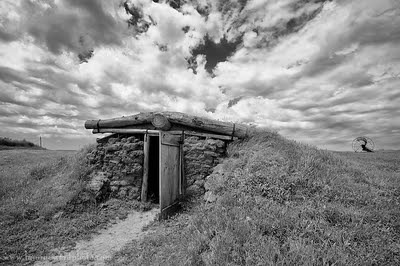

The Badlands of South Dakota are tucked away in the middle of nowhere, but offer photographers incredibly unique scenery. I recently returned from leading a four-day photo safari to Badlands National Park. Here are some of the images from that trip. You can see more images online at my image galleries: http://www.flickr.com/photos/jpodell/collections/72157627092395700/





Published on July 22, 2011 04:00
July 21, 2011
What Makes a Book Good?
Have you ever read reviews or had people recommend books, and then you read them and can't understand what all the fuss is about? What works for one reader might not work for another. And there's nothing wrong with that—that's why there are so many different books!
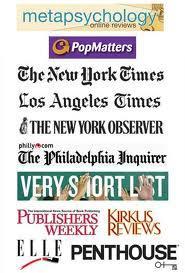 While I was in Los Angeles, I had time to hook up with a friend from high school. We discussed reading and writing, and we got started discussing the male-female thing. He'd read books by a well-known female mystery author, and he said he rushed through all the "emotional" stuff because he wasn't interested in that. He wanted the "mystery" stuff, not all the "feeling" stuff.
While I was in Los Angeles, I had time to hook up with a friend from high school. We discussed reading and writing, and we got started discussing the male-female thing. He'd read books by a well-known female mystery author, and he said he rushed through all the "emotional" stuff because he wasn't interested in that. He wanted the "mystery" stuff, not all the "feeling" stuff.
I recently read two "out of my normal genre" books in anticipating of attending a book club meeting. I'll be interested in seeing how the book club works, especially since the woman who invited me stressed that they served a delicious breakfast rather than extolling the brilliance of the book discussions. I've never joined one before, since they remind me too much of assigned reading in high school.
One of the books I read would, by today's standards, probably be considered poor writing. But it was a memoir written by someone born just after the Civil War, who had very little formal education. The publisher had opted to leave the manuscript virtually intact rather than edit it for spelling or grammar.
However, I managed to get beyond that almost immediately, because the character was fascinating. And since a lot of the book took place near where we now live, it was even more fascinating to think about how she either walked or rode in open wagons along routes we drive by car now. And how long it must have taken to get from one place to another. Where we drive for about 25 minutes to our Sunday morning breakfast café would have taken her the better part of a full day.
The other book was "literary" fiction, and beautifully written. But it bored me to the point where if I hadn't finished before I had to return it to the library, I wouldn't have minded. I almost stopped reading after 30 pages. Why didn't I like the book despite the quality of the writing? For the most part, because I didn't care about the characters. The pacing was slow, and the author had a tendency to use names that started with "A" so I kept getting the characters mixed up.
As far as books I've chosen to read—I'm finding other things that pull me out of the story. In one, the author spends way too much time on description for my taste, especially at the beginning, where I'm trying to figure out what the story is going to be about. Show me the conflict, not the sunsets. To me, description needs to be integrated into the story, not bring it to a halt while the author shows me around.
In another, as I tried to analyze why it didn't work, since the character had plenty of conflict, and everything that "belongs" in a mystery was there, I decided it was primarily because the character was too self-centered and whiny. My reaction was more, "shut up and get over it" rather than, "oh, I feel your pain." I did check one of the major websites for readers, and I noted that when someone gave the book a 3 star review (out of 5), the protagonist's behavior and attitude were usually mentioned as the detracting factors. Others didn't seem to mind, focusing more on the mystery plot. Same book, different readers, different reactions.
I remind myself of this every time I get an email that says one of my books has just been reviewed! And of course, I'm thrilled when they're like this one.
Tomorrow, we're going to the Badlands of South Dakota with Jason. I was going to post pictures of my trip to LA, but copy edits got in the way. I'll try for next week. But I REALLY want your pictures!
 While I was in Los Angeles, I had time to hook up with a friend from high school. We discussed reading and writing, and we got started discussing the male-female thing. He'd read books by a well-known female mystery author, and he said he rushed through all the "emotional" stuff because he wasn't interested in that. He wanted the "mystery" stuff, not all the "feeling" stuff.
While I was in Los Angeles, I had time to hook up with a friend from high school. We discussed reading and writing, and we got started discussing the male-female thing. He'd read books by a well-known female mystery author, and he said he rushed through all the "emotional" stuff because he wasn't interested in that. He wanted the "mystery" stuff, not all the "feeling" stuff.I recently read two "out of my normal genre" books in anticipating of attending a book club meeting. I'll be interested in seeing how the book club works, especially since the woman who invited me stressed that they served a delicious breakfast rather than extolling the brilliance of the book discussions. I've never joined one before, since they remind me too much of assigned reading in high school.
One of the books I read would, by today's standards, probably be considered poor writing. But it was a memoir written by someone born just after the Civil War, who had very little formal education. The publisher had opted to leave the manuscript virtually intact rather than edit it for spelling or grammar.
However, I managed to get beyond that almost immediately, because the character was fascinating. And since a lot of the book took place near where we now live, it was even more fascinating to think about how she either walked or rode in open wagons along routes we drive by car now. And how long it must have taken to get from one place to another. Where we drive for about 25 minutes to our Sunday morning breakfast café would have taken her the better part of a full day.
The other book was "literary" fiction, and beautifully written. But it bored me to the point where if I hadn't finished before I had to return it to the library, I wouldn't have minded. I almost stopped reading after 30 pages. Why didn't I like the book despite the quality of the writing? For the most part, because I didn't care about the characters. The pacing was slow, and the author had a tendency to use names that started with "A" so I kept getting the characters mixed up.
As far as books I've chosen to read—I'm finding other things that pull me out of the story. In one, the author spends way too much time on description for my taste, especially at the beginning, where I'm trying to figure out what the story is going to be about. Show me the conflict, not the sunsets. To me, description needs to be integrated into the story, not bring it to a halt while the author shows me around.
In another, as I tried to analyze why it didn't work, since the character had plenty of conflict, and everything that "belongs" in a mystery was there, I decided it was primarily because the character was too self-centered and whiny. My reaction was more, "shut up and get over it" rather than, "oh, I feel your pain." I did check one of the major websites for readers, and I noted that when someone gave the book a 3 star review (out of 5), the protagonist's behavior and attitude were usually mentioned as the detracting factors. Others didn't seem to mind, focusing more on the mystery plot. Same book, different readers, different reactions.
I remind myself of this every time I get an email that says one of my books has just been reviewed! And of course, I'm thrilled when they're like this one.
Tomorrow, we're going to the Badlands of South Dakota with Jason. I was going to post pictures of my trip to LA, but copy edits got in the way. I'll try for next week. But I REALLY want your pictures!
Published on July 21, 2011 04:00
July 20, 2011
Character Quirks
What I'm reading: Burn, by Nevada Barr
Thanks to Laurin for her excellent advice on making settings matter. Settings are excellent ways to show more about your characters.
 My recent visit home triggered some thoughts about other ways to approach dealing with the characters who populate our novels. We've all met people with identifying characteristics. Sometimes it's physical appearance. Sometimes it's an unconscious gesture. Sometimes it's speech patterns.
My recent visit home triggered some thoughts about other ways to approach dealing with the characters who populate our novels. We've all met people with identifying characteristics. Sometimes it's physical appearance. Sometimes it's an unconscious gesture. Sometimes it's speech patterns.
All of the above are ways to help your reader see and understand your character. But what about some other idiosyncrasies? Does your character have an endearing habit? What about an annoying one? Is the character aware of how the habit might affect other characters on the page? Does he care?
You know those clever little magnets that you put on the dishwasher that say "clean" on one side and "dirty" on the other? In our house, they would have been a waste of money because my mother never left clean dishes in the dishwasher. As soon as it finished running, it was emptied. The one night she complained about how tired she was, but couldn't go to bed until the dishwasher finished, my dad told her she could do it in the morning. No go. We finally agreed to wait until the cycle was over, and one of us would empty it.
She also virtually washed the dishes before putting them in. And our running joke was that she would have the dishes done before we finished eating dessert.
And, she always set the breakfast table before going to bed. However, she didn't do a complete setting. She would only put out the appropriate plates and cutlery. Cereal bowls and a spoon, or a plate and fork for eggs. Now, once my brother and I were riding the bus to school and out of the house very early, she left us to get our own breakfasts … but she wanted to know the night before what we would feel like eating in the morning. It was easier to say something, then make the switch ourselves the next day. From time to time, she'd leave a frying pan on the stove with two eggs in it, where she'd written "eat me" on the shells, so she expected us to cook them for our breakfast.
Now, decades later, she hasn't changed at all. When I was visiting last week, I still got grilled in the evening about what I wanted for breakfast the next day.
Little things like this can add interest to a scene. Just remember that there has to be another plot-related reason for the scene to exist. Showing quirks isn't reason enough to justify a scene. But if a character idiosyncrasy can create some kind of conflict or tension, and throw an obstacle in the way of your character, it can add depth to your story. Or, it can serve to bring characters closer together as they recognize the habit for what it is.
Do you know people whose idiosyncrasies would work for a character? Or characters whose idiosyncrasies make them memorable?
Thanks to Laurin for her excellent advice on making settings matter. Settings are excellent ways to show more about your characters.
 My recent visit home triggered some thoughts about other ways to approach dealing with the characters who populate our novels. We've all met people with identifying characteristics. Sometimes it's physical appearance. Sometimes it's an unconscious gesture. Sometimes it's speech patterns.
My recent visit home triggered some thoughts about other ways to approach dealing with the characters who populate our novels. We've all met people with identifying characteristics. Sometimes it's physical appearance. Sometimes it's an unconscious gesture. Sometimes it's speech patterns.All of the above are ways to help your reader see and understand your character. But what about some other idiosyncrasies? Does your character have an endearing habit? What about an annoying one? Is the character aware of how the habit might affect other characters on the page? Does he care?
You know those clever little magnets that you put on the dishwasher that say "clean" on one side and "dirty" on the other? In our house, they would have been a waste of money because my mother never left clean dishes in the dishwasher. As soon as it finished running, it was emptied. The one night she complained about how tired she was, but couldn't go to bed until the dishwasher finished, my dad told her she could do it in the morning. No go. We finally agreed to wait until the cycle was over, and one of us would empty it.
She also virtually washed the dishes before putting them in. And our running joke was that she would have the dishes done before we finished eating dessert.
And, she always set the breakfast table before going to bed. However, she didn't do a complete setting. She would only put out the appropriate plates and cutlery. Cereal bowls and a spoon, or a plate and fork for eggs. Now, once my brother and I were riding the bus to school and out of the house very early, she left us to get our own breakfasts … but she wanted to know the night before what we would feel like eating in the morning. It was easier to say something, then make the switch ourselves the next day. From time to time, she'd leave a frying pan on the stove with two eggs in it, where she'd written "eat me" on the shells, so she expected us to cook them for our breakfast.
Now, decades later, she hasn't changed at all. When I was visiting last week, I still got grilled in the evening about what I wanted for breakfast the next day.
Little things like this can add interest to a scene. Just remember that there has to be another plot-related reason for the scene to exist. Showing quirks isn't reason enough to justify a scene. But if a character idiosyncrasy can create some kind of conflict or tension, and throw an obstacle in the way of your character, it can add depth to your story. Or, it can serve to bring characters closer together as they recognize the habit for what it is.
Do you know people whose idiosyncrasies would work for a character? Or characters whose idiosyncrasies make them memorable?
Published on July 20, 2011 04:00
July 19, 2011
Setting: It's not just a place
Today my guest is Laurin Wittig, who writes historical romances set in the Scottish Highlands. She's blogging today on how to make your settings do more than just be the backdrop to your story. And as a bonus, it's also my day over at The Blood Red Pencil.
When you create a story, does the setting matter to you? It should. The setting is an important backdrop for your story but it can be so much more than Aubusson carpets, castles or spaceships. If you can pick your story up and put it in another setting without changing it, then you are missing an opportunity to deepen both your story and your characters.
I was recently critiquing a story written in first person which included a lot of what I termed "reporter" mode whenever the protagonist went into a new environment/setting. The place and the things in it were described well enough that I could picture where she was, but it was flat and frankly a little boring. The setting didn't matter to the character, so it didn't matter to me. That's when I realized something I've intuitively known for a long time: it isn't the description of the setting that is important to the reader's experience, it's the point of view character's perception and emotional response to the setting that's important.
You know how writers are always spouting off about "show, don't tell"? This is a great example of why that is so important. Let me give you an example of reporting/telling about a setting:
The computer monitor and keyboard sat on top of a wooden desk strewn with pieces of paper. A green desk chair was pushed off to one side of the desk. An empty coffee mug sat to the left of the keyboard and on the right was a box of tissues. One picture of a yellow kayak hung above the monitor.
Is this an accurate description of a desk in someone's office? Sure. Do you care whose office it is? I don't. Can you even tell whose office it is? Is it a home office or a business office? Who is describing this office? Why is this office important? (That's the big question!)
It's a description of a setting but it really doesn't convey any information beyond what it looks like. But what if I described/showed it this way...
I glared at the black screen on the monitor across the room. His chair, his expensive, ergonomic, ordered all the way from Sweden in ice-moss green, chair sat right where he'd left it three days ago, shoved away from the desk. A dried up slosh of coffee surrounded his abandoned mug and the guilt that had dogged me for wasting so much money on the fancy coffee machine for Christmas last year just added to the slurry of misery in my gut. I glanced at the picture of his kayak over his desk and tried to remember the joy and excitement of those early days together.
Now does what is essentially the same room tell you anything about the character describing it? Can you see how this descriptive passage is also filled with emotions? Glared. Shoved away. Abandoned. Guilt. Slurry of misery. Do these descriptions suggest something about the relationship of the point of view character and the owner of the office?
I could add additional sense details to make the setting even more vivid. What if she smelled his aftershave still filling the room, then closed the door behind her, shutting the smell inside with everything else? Would that add a still deeper meaning to this setting? I think so.
Check out some of your own setting descriptions, or pick up a book by your favorite author and look at how setting is used. Does it do double or triple duty, not only showing the place where the scene is happening but also showing the point of view character's emotions, or reflecting or hinting at the conflict, or reinforcing the character's world view, or motivations or goals?
Does it have to do all of that at once to earn its place in your story? No, but it should do at least a couple. Setting isn't just the backdrop for a story, it's a subtle tool for adding depth to characters, and to an entire story.
You can find out more about Laurin's books at http://laurinwittig.com. Her craft of writing blog, Between the Lines, is at http://BTLCritiques.com. Her books are available at most online booksellers, including Amazon.com, and Laurin can also be found at Facebook and at Twitter @LaurinWittig.
When you create a story, does the setting matter to you? It should. The setting is an important backdrop for your story but it can be so much more than Aubusson carpets, castles or spaceships. If you can pick your story up and put it in another setting without changing it, then you are missing an opportunity to deepen both your story and your characters.
I was recently critiquing a story written in first person which included a lot of what I termed "reporter" mode whenever the protagonist went into a new environment/setting. The place and the things in it were described well enough that I could picture where she was, but it was flat and frankly a little boring. The setting didn't matter to the character, so it didn't matter to me. That's when I realized something I've intuitively known for a long time: it isn't the description of the setting that is important to the reader's experience, it's the point of view character's perception and emotional response to the setting that's important.
You know how writers are always spouting off about "show, don't tell"? This is a great example of why that is so important. Let me give you an example of reporting/telling about a setting:
The computer monitor and keyboard sat on top of a wooden desk strewn with pieces of paper. A green desk chair was pushed off to one side of the desk. An empty coffee mug sat to the left of the keyboard and on the right was a box of tissues. One picture of a yellow kayak hung above the monitor.
Is this an accurate description of a desk in someone's office? Sure. Do you care whose office it is? I don't. Can you even tell whose office it is? Is it a home office or a business office? Who is describing this office? Why is this office important? (That's the big question!)
It's a description of a setting but it really doesn't convey any information beyond what it looks like. But what if I described/showed it this way...
I glared at the black screen on the monitor across the room. His chair, his expensive, ergonomic, ordered all the way from Sweden in ice-moss green, chair sat right where he'd left it three days ago, shoved away from the desk. A dried up slosh of coffee surrounded his abandoned mug and the guilt that had dogged me for wasting so much money on the fancy coffee machine for Christmas last year just added to the slurry of misery in my gut. I glanced at the picture of his kayak over his desk and tried to remember the joy and excitement of those early days together.
Now does what is essentially the same room tell you anything about the character describing it? Can you see how this descriptive passage is also filled with emotions? Glared. Shoved away. Abandoned. Guilt. Slurry of misery. Do these descriptions suggest something about the relationship of the point of view character and the owner of the office?
I could add additional sense details to make the setting even more vivid. What if she smelled his aftershave still filling the room, then closed the door behind her, shutting the smell inside with everything else? Would that add a still deeper meaning to this setting? I think so.
Check out some of your own setting descriptions, or pick up a book by your favorite author and look at how setting is used. Does it do double or triple duty, not only showing the place where the scene is happening but also showing the point of view character's emotions, or reflecting or hinting at the conflict, or reinforcing the character's world view, or motivations or goals?
Does it have to do all of that at once to earn its place in your story? No, but it should do at least a couple. Setting isn't just the backdrop for a story, it's a subtle tool for adding depth to characters, and to an entire story.
You can find out more about Laurin's books at http://laurinwittig.com. Her craft of writing blog, Between the Lines, is at http://BTLCritiques.com. Her books are available at most online booksellers, including Amazon.com, and Laurin can also be found at Facebook and at Twitter @LaurinWittig.
Published on July 19, 2011 05:00
July 18, 2011
To Hyphenate or Not To Hyphenate?
What I'm reading: Deadly Currents, by Beth Groundwater
 I'm slowly reaching the end of my copy edits for ROOTED IN DANGER. As I mentioned, just because this is the second editorial pass doesn't mean all the errors have been caught, so I have been reading the whole book. She's caught things that weren't picked up on the first pass, but I've also caught a few glitches that nobody else did.
I'm slowly reaching the end of my copy edits for ROOTED IN DANGER. As I mentioned, just because this is the second editorial pass doesn't mean all the errors have been caught, so I have been reading the whole book. She's caught things that weren't picked up on the first pass, but I've also caught a few glitches that nobody else did.
For the most part, the editor's suggestions have been painless, and I agree with most of them. There are a few places where she's changed sentence structure, and it didn't work for me.
My mom's first language was German, not English, and her sentence structure often followed the Germanic patterns. Our family favorite: "Look for me in the bottom drawer for the pound cake." Of course, my brother and I opened the bottom drawer and said, "Mom! You're in here!"
In one case, I'd written: She went into the bedroom closet and dragged the cardboard carton she'd brought with her to the bedside.
The editor preferred: She went into the bedroom closet and dragged to the bedside the cardboard carton she'd brought with her.
Which would you prefer?
The editor also likes hyphens when a two-word phrase modifies a noun. I'm more likely to avoid the hyphens (I use enough of them as it is) unless they make the meaning clearer.
For example, if you write "small animal hospital," that's entirely different from "small-animal hospital." The first can refer to the size of the hospital, while the second makes it clear that they won't be having horses or cows as patients.
But there are others where I don't think there's really going to be much confusion on the part of the reader. And isn't that what almost all those pesky grammar rules are for, anyway? Do we follow the letter of the law, or do we go with intent?
So – how about a little quiz. These are examples from the manuscript. Which ones (in red) need hyphens in the context of the sentences to make the meaning clearer? You can answer (or not, as you prefer) in the comments. But I'd love to hear from you.
1. Torie nibbled room service toast and sipped ginger ale.
2. Steel band music wafted from the distance.
3. She thought he was going to kiss her last night—a real kiss—and then he did that kid sister thing.
4. Torie didn't need to hear about the private, covert ops side of the business, where Fozzie spent most of his time.
5. But something raised the hairs on the back of his neck, and he never ignored his early warning system.
6. Beach boy hair.
7. "What about him?" she asked as they passed the man's body on the living room floor
8. I spent some time reading that support group site for Willamette Syndrome.
9. "They may get the forensics wrong on television," Brad said, "and play fast and loose with the legal system, but they usually get the human nature part right."
10. The red master warning light came on.
Tomorrow, my guest is Laurin Wittig. Her topic is setting. Definitely worth coming back for. And I should be over at the Blood Red Pencil doing my once-a-month blog post.
(Note: I switched to Blogger's new editor, which I don't really like--it imports too much wasted code from Word--but I thought I'd give it a try. If things look wonky, I'll probably switch back. Let me know if there are problems with what you see.)
 I'm slowly reaching the end of my copy edits for ROOTED IN DANGER. As I mentioned, just because this is the second editorial pass doesn't mean all the errors have been caught, so I have been reading the whole book. She's caught things that weren't picked up on the first pass, but I've also caught a few glitches that nobody else did.
I'm slowly reaching the end of my copy edits for ROOTED IN DANGER. As I mentioned, just because this is the second editorial pass doesn't mean all the errors have been caught, so I have been reading the whole book. She's caught things that weren't picked up on the first pass, but I've also caught a few glitches that nobody else did.For the most part, the editor's suggestions have been painless, and I agree with most of them. There are a few places where she's changed sentence structure, and it didn't work for me.
My mom's first language was German, not English, and her sentence structure often followed the Germanic patterns. Our family favorite: "Look for me in the bottom drawer for the pound cake." Of course, my brother and I opened the bottom drawer and said, "Mom! You're in here!"
In one case, I'd written: She went into the bedroom closet and dragged the cardboard carton she'd brought with her to the bedside.
The editor preferred: She went into the bedroom closet and dragged to the bedside the cardboard carton she'd brought with her.
Which would you prefer?
The editor also likes hyphens when a two-word phrase modifies a noun. I'm more likely to avoid the hyphens (I use enough of them as it is) unless they make the meaning clearer.
For example, if you write "small animal hospital," that's entirely different from "small-animal hospital." The first can refer to the size of the hospital, while the second makes it clear that they won't be having horses or cows as patients.
But there are others where I don't think there's really going to be much confusion on the part of the reader. And isn't that what almost all those pesky grammar rules are for, anyway? Do we follow the letter of the law, or do we go with intent?
So – how about a little quiz. These are examples from the manuscript. Which ones (in red) need hyphens in the context of the sentences to make the meaning clearer? You can answer (or not, as you prefer) in the comments. But I'd love to hear from you.
1. Torie nibbled room service toast and sipped ginger ale.
2. Steel band music wafted from the distance.
3. She thought he was going to kiss her last night—a real kiss—and then he did that kid sister thing.
4. Torie didn't need to hear about the private, covert ops side of the business, where Fozzie spent most of his time.
5. But something raised the hairs on the back of his neck, and he never ignored his early warning system.
6. Beach boy hair.
7. "What about him?" she asked as they passed the man's body on the living room floor
8. I spent some time reading that support group site for Willamette Syndrome.
9. "They may get the forensics wrong on television," Brad said, "and play fast and loose with the legal system, but they usually get the human nature part right."
10. The red master warning light came on.
Tomorrow, my guest is Laurin Wittig. Her topic is setting. Definitely worth coming back for. And I should be over at the Blood Red Pencil doing my once-a-month blog post.
(Note: I switched to Blogger's new editor, which I don't really like--it imports too much wasted code from Word--but I thought I'd give it a try. If things look wonky, I'll probably switch back. Let me know if there are problems with what you see.)
Published on July 18, 2011 04:00



